Fermentation: celebrating scraps and grounding ourselves in times of unrest
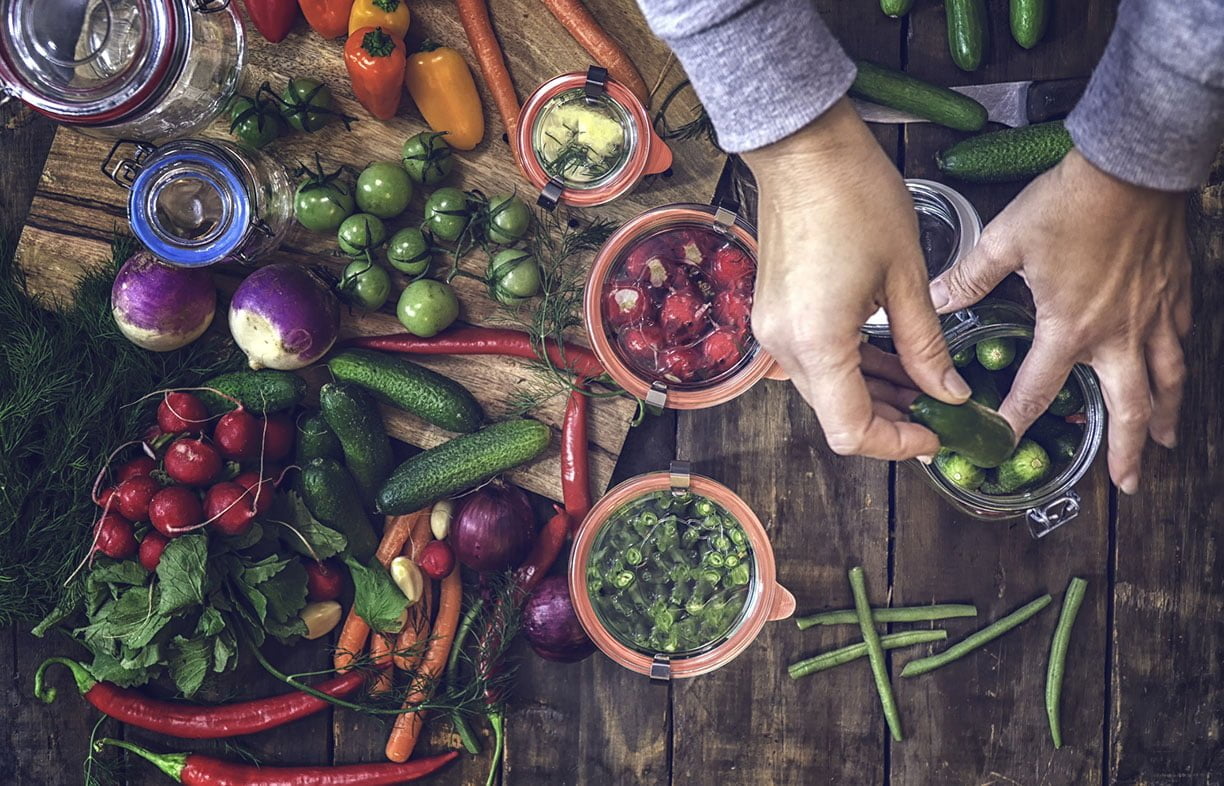
Few good things have come out of the COVID pandemic, but one of those is an increase of self-reliance for many of us. Janina Waldmann explains.
The early weeks of the COVID-19 pandemic saw Google searches for ‘sourdough starter’ peak as bread and yeast shortages left people scrambling to find a way to make bread from scratch. What began out of desperation for a crunchy loaf soon took over social media as amateur bakers cranked up their ovens, and pandemic baking became the hobby of the masses.
Sourdough, like kimchi, sauerkraut and kombucha, is a ferment. And it’s far from the only one having a renaissance. It’s been close to a decade since kombucha exploded onto grocery store shelves, while other ferments like vinegar, beer and wine have been staples of our ancestors for many thousands of years.
What is fermentation?
Fermentation is an ancient form of food preservation. It’s an incredibly simple process that requires only the slightest of nudges to get going. Microorganisms convert sugar into acid, creating an environment hostile to harmful bacteria and allowing fermented foods to be stored unrefrigerated for long periods. The acidity produced during this process gives fermented foods their famous tang, from vinegar to yoghurt and everything in between.
Marcea Klein is a fermentation educator and says fermentation is one of the oldest practices in human history. Its origins can be traced back as far as 10,000 BCE, when fermentation began with camel milk. Several thousand years later, around 7000 BCE, a fermented product of honey, rice and fruit started to appear in China, and by approximately 1500 CE, grain fermentation had been discovered. This grain fermentation was likely the precursor to modern alcohol brewing.
In the pre-refrigeration era, food preservation was vital. Pickling, fermenting, salting and smoking were popular methods and allowed people to make the most of summer and spring abundance to see them through winter. While in Australia, our milder climate means we’re fortunate enough to have access to a wide variety of fruits and vegetables throughout the year, other parts of the world are not so lucky.
Pre-refrigeration, and without preserving methods like fermentation, those living in central and northern Europe, for instance, would spend most of the winter living off a relatively small rotation of fresh foods. Fermentation and other preservation methods allowed people living in these parts of the world to preserve spring and summer’s bounty to provide nutrients, vitamins and prebiotic fibre through the dark winter months.
Now that we do have refrigeration, why take the time to ferment? For Jaimee Edwards, head fermenter at Sydney’s Cornersmith, it’s all about the flavour. “Why would we spend the time nurturing something that does take time to produce? It’s because the results are so beautiful,” she says. Jaimee believes that ultimately their taste is why fermented foods haven’t been relegated to the annals of health food history but have become staples in households around the country—whether homemade or store-bought.
While technically everything is fermentable, Jaimee says not all that ferments is gold. Starchy fermented vegetables like potatoes, for instance, are not her cup of tea, and she says even fermentation enthusiasts should steer clear of any putrefying zucchinis found at the bottom of the crisper, even though they, too, are technically fermented. Jaimee looks to fermentation’s long history to pick out hints about what will be tasty and what’s best left unfermented.
Fermentation is a little bit of science and what feels like a little bit of magic, so it’s no wonder so many people are scrunching and munching their way to microbe-powered happiness.
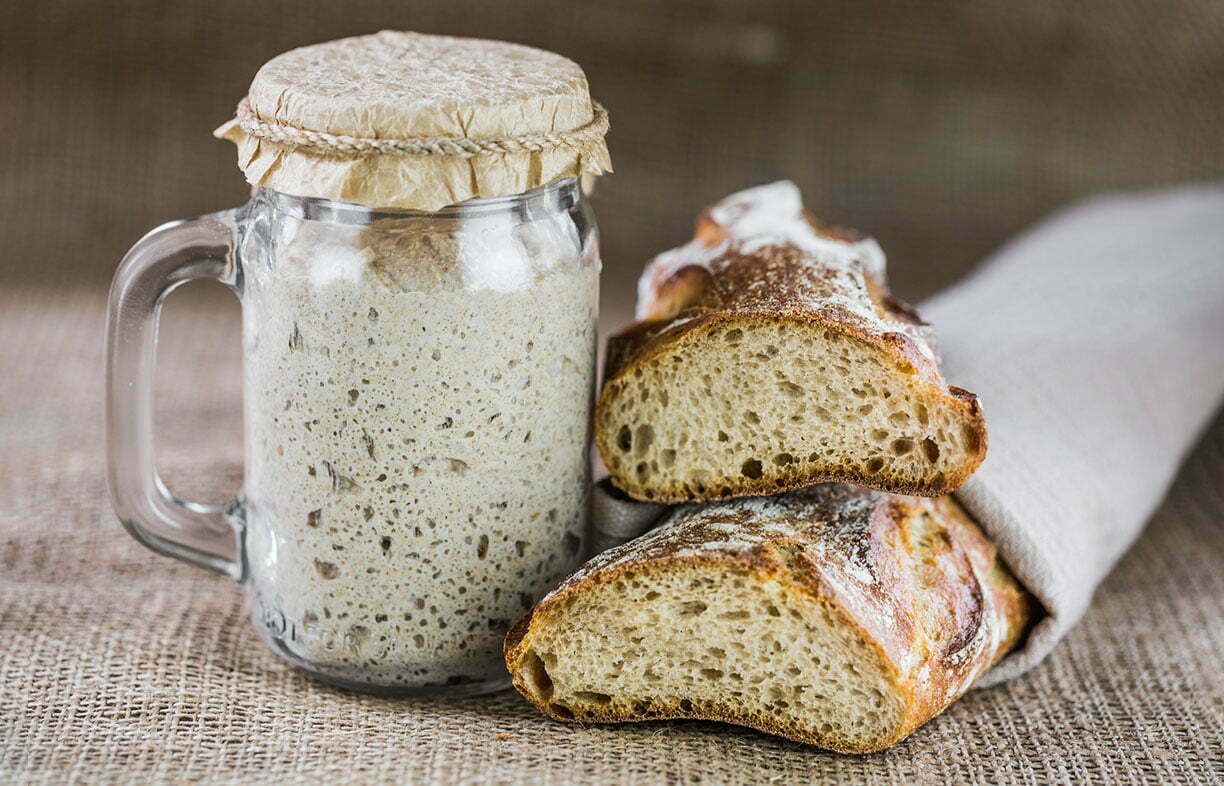
Fermentation for mental health
The true beauty of fermentation is the connection it embodies—both to the foods we consume and to ourselves.
“People’s relationship to food at the moment is quite alienated in lots of ways, not just the way it is produced, but just how it exists, even in their kitchen, their fridge,” Jaimee says. When fermenting, she explains, the relationship is more intimate. Food produced by fermentation is variable; it won’t taste identical every time. Jaimee explains that to enjoy fermentation, it’s essential to learn to roll with the punches. “That in itself is a pleasure,” she says.
Gemma Kaczerepa has been living with anxiety for most of her adult life. She’s used baking and cooking to ground herself for as long as she can remember but didn’t see it as a way to get out of her own head until much later. “It wasn’t until later … that I realised that baking and cooking and doing things like making my own bread and making my own sauerkraut and kombucha were actually mindful activities that really helped with my anxiety,” she explains.
Working on a ferment for hours at a time, finely chopping or kneading, is profoundly grounding. “It’s almost like a meditation, and it’s the same thing with fermenting something like sauerkraut or kombucha because it’s a very slow burn. You can kind of check out more than if you’re following a recipe that has 20 steps.”
Gemma says that the long fermenting process lets her get in the zone with her food. She takes the time to switch off from the world and work through her anxieties. Not to mention that she has delicious bread, a sparkling drink, or some crunchy kraut as a reward when she’s finished. The sense of satisfaction is immense and gives Gemma an outlet for her anxiety.
Teresa Mars, a clinical counsellor and member of the Psychotherapy and Counselling Federation of Australia, agrees that the meditative nature of slowing down and connecting with food can support good mental health. “Just cutting up the produce can be almost a meditation,” she explains. The fact that something as simple and repetitive as chopping vegetables requires attention to detail to avoid injury can have mental health benefits in itself.
Teresa adds that there are two beneficial elements to fermenting. The making and the nurturing. Fermented products build up CO2, so closed jars and bottles must be ‘burped’ regularly to avoid explosions. Simple rituals like burping jars and bottles daily can help establish a routine for those struggling with mental health. “Any kind of routine helps people who maybe lack motivation or suffer from depression, any kind of daily routine helps them feel better and feel productive,” Teresa explains.
It links back to something referred to as ‘building mastery’, which is used in dialectical behaviour therapy to manage disregulated emotions. While there are many ways to build mastery, Teresa says working with food has the added benefit of resulting in a product that helps nurture the fermenter and those around them. Besides, she adds, it’s exciting. Seeing a dough rise just right is deeply satisfying, and working with something directly from nature has a calming element to it as well.
Marcea believes that fermentation helps people learn to trust themselves. Marcea encourages her students to experiment with flavours through spices and combinations in her workshops. “I don’t like to tell them that they have to choose this spice and that spice. [My students] say do they go together? And I just say, well, do they?” she explains. She says nothing will go wrong, “unless it’s green, then that’s not good.”
The fermentation process is good for the soul. Standing in a kitchen surrounded by bubbling concoctions full of life is a gentle reminder that good things come to those who wait.
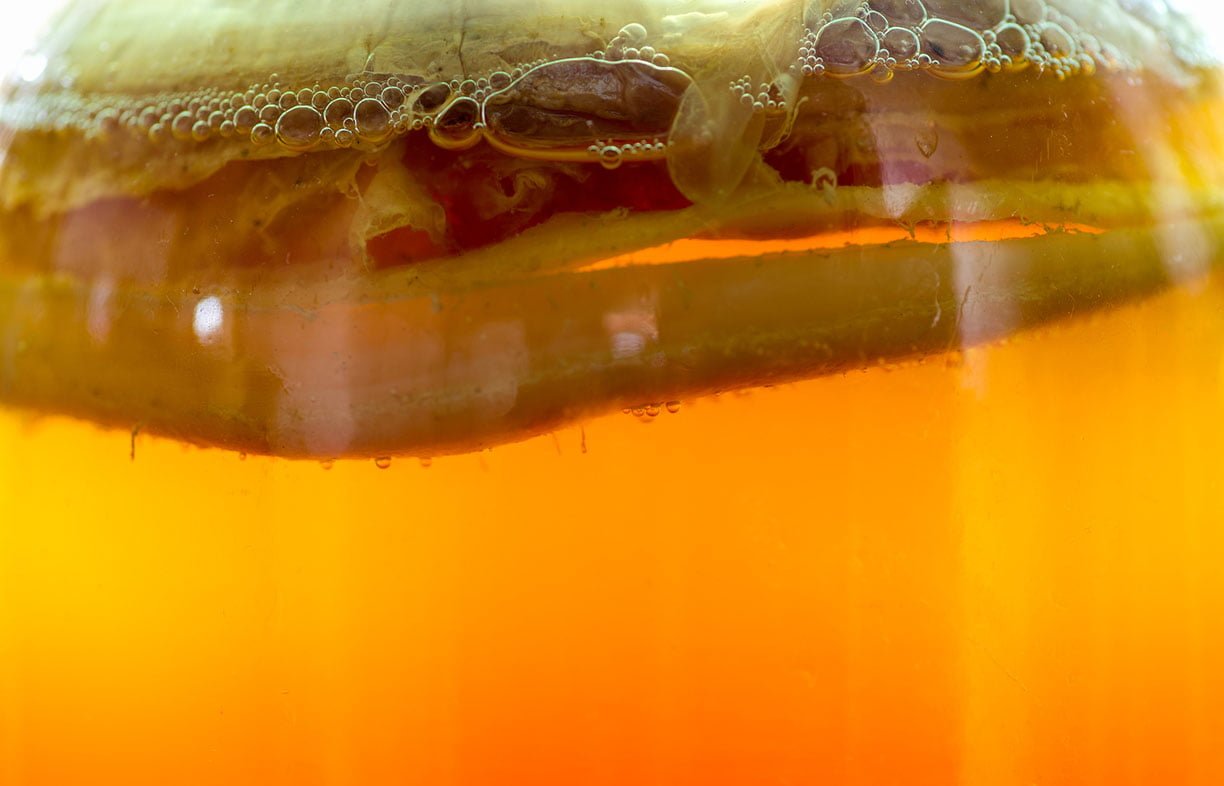
Scrap saving
The benefits of fermentation go beyond the individual. Fermentation is a great way to use up odds and ends from the fridge, ensuring as little goes to waste as possible and using seasonal abundance when produce is cheap. Turn sad cabbage into delicious kraut, wrinkly ginger bulbs into sparkling ginger beer and saggy tomatoes into bubbling, fiery salsa.
Jaimee explains: “Part of the reason why [preservation techniques like fermenting] came about is because everyone used up everything … Mostly they came out of the so-called scraps that were put to use.” Fermented food is food for the masses, cheap to prepare and saves money by preventing edible food from going to waste.
Food waste is an often underappreciated driver of climate change. “Not many people realise that food waste is a major contributor to climate change,” says Monique Llewellyn, Sustainability Manager with Australian food charity OzHarvest. Food waste is responsible for from 6% to 10% of global greenhouse gases (depending on who you ask), more than the aviation sector.
Monique explains that everyday Australians have a huge role to play in changing the way we use and waste food. “In Australia alone more than 7.3 million tonnes of food is wasted every year, which works out at around 289 kg per person—that’s the same weight as six kangaroos.” A third of this waste can be attributed to households rather than the production line.
The potential impact of reducing this food waste is huge. “People are often quick to blame supermarkets, but reducing the 2.5 million tonnes of food waste from our homes is the easiest place to start,” says Monique. In fact, scientists at Project Drawdown have highlighted minimising food waste as one of the most impactful changes individuals can make for a healthier climate.
“Fermentation and pickling are simple ways to extend the life of the foods you have,” Monique explains.
Marcea agrees that fermentation is an important weapon in the fight against food waste. She’s appalled at the amount of food considered ‘waste’, primarily peels, stems and tops of fruits and vegetables. These are all usable and often fermentable. Marcea ferments coriander stems and carrot tops, adds orange peel to sauerkraut and pickles spring onion roots and broccoli stems in a salt brine.
Using up all the food we purchase is an important step towards a future with a safe and stable climate, but it’s also an act of respect for the people who grow and process our food. Fermentation allows individuals to take some of that process back into their own kitchens and save food that would otherwise be forgotten. Putting in the hours and diligence needed to sterilise jars, prepare the produce and pack it into the jars it will spend weeks coming to life in brings us closer to understanding the effort that goes into the food we buy in the supermarket.
Marcea says the first thing that needs to happen is that people become used to eating fermented foods every day. For her, these foods are not special; they are everyday basics that belong in every meal.
It’s not necessary to set aside a whole day for fermenting either, according to Jaimee from Cornersmith. Her kitchen scrap kimchi, for instance, is quick and easy and uses scraps otherwise destined for landfills or compost to make a delicious flavour bomb that can be added to salads, sandwiches, soups, stews and more.
Gemma also looks for ways that her fermenting skills can help her minimise waste. Rather than waiting for excess cabbage to turn into soup in the back of her fridge, she gives it a second life in a salty brine and enjoys the many benefits fermenting and fermented foods offer.
There’s no denying we live in uncertain times. Between war, a pandemic, and climate collapse, there’s more than enough to be anxious about. Among the madness, fermentation is a humble sort of joy. Predictable, satisfying and with a delicious outcome. Do this, and this will happen—simple, slow, deliberate, and bubbling with life.
Cornersmith’s kitchen scrap fermenting
Ingredients (makes a 1 litre or two 500 ml jars)
- 400 g to 500 g of whatever vegetables you have on hand: carrots, celery, green beans, beetroot, turnips, or a combination
- 1 to 2 tablespoons of spice such as caraway seed, dill seed, black pepper, juniper berries or cumin seeds
- 750 ml water
- 15 g salt
Method
- Begin by sterilising your jars and allow to cool completely.
- While that is happening, make a brine. In a small saucepan, bring water and salt to a simmer, stirring until the salt is dissolved. Remove from the heat and allow to cool completely.
- Slice the vegetables into whatever shape you prefer. Matchsticks or rounds work well, but keep green beans whole.
- Add your spices to the cooled jars and pack in the vegetables.
- Top with the cooled brine, making sure that the vegetables are covered completely.
- Seal the jars.
The ferment
Place the jar in a cool, dry spot out of direct sunlight for two days. If you are using a jar without an air lock, you will need to open the jar every few days to allow the CO2 to escape.
Keep fermenting for up to two weeks, checking the jar regularly, tasting and making sure the vegetables are covered in brine.
Once you are happy with the flavour, pop the jars in the fridge and they will keep for three to four months.
Further reading
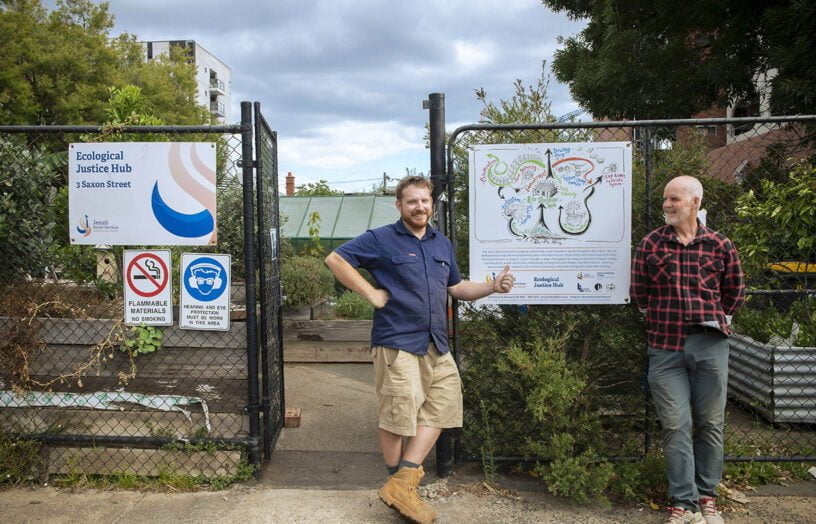 Reuse & recycling
Reuse & recycling
Community eco hub
Nathan Scolaro spends 15 minutes with Stuart Wilson and Michael McGarvie from the Ecological Justice Hub in Brunswick, Melbourne.
Read more Reuse & recycling
Reuse & recycling
Recycled hydronic heat
Renew’s sustainability researcher Rachel Goldlust gives us a view of and from the Salvage Yard.
Read more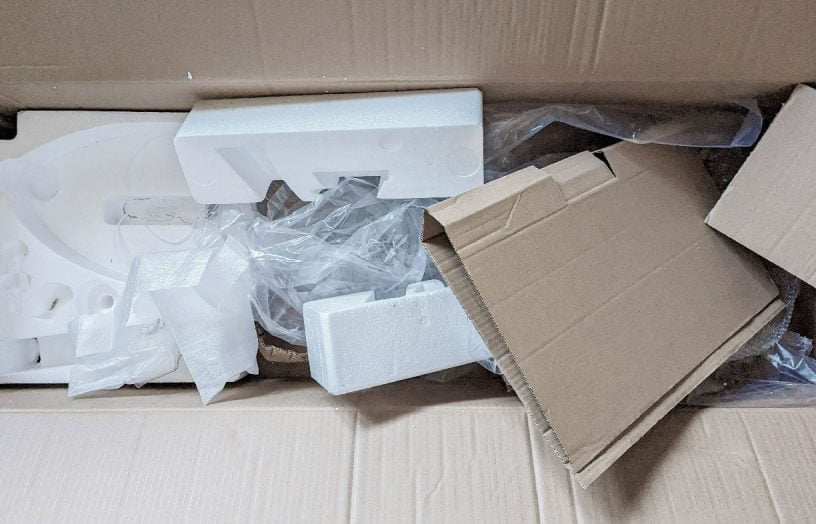 Reuse & recycling
Reuse & recycling
The future of packaging
Packaging comes with just about everything we consume, with far-reaching implications for us and the planet. Jane Hone asks how we can get a handle on it.
Read more
